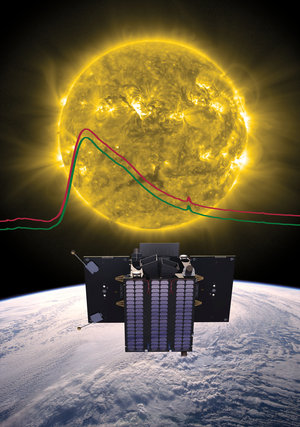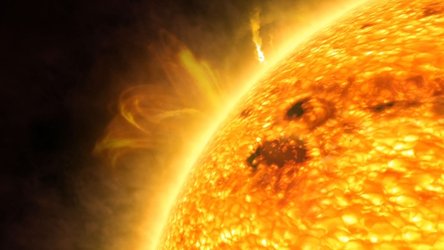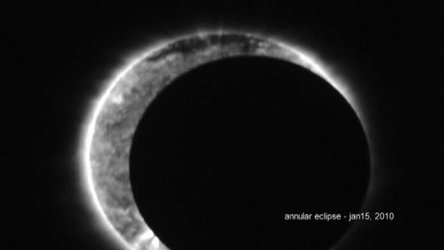Accept all cookies Accept only essential cookies See our Cookie Notice

About ESA
The European Space Agency (ESA) is Europe’s gateway to space. Its mission is to shape the development of Europe’s space capability and ensure that investment in space continues to deliver benefits to the citizens of Europe and the world.
Highlights
ESA - United space in Europe
This is ESA ESA facts Member States & Cooperating States Funding Director General Top management For Member State Delegations European vision European Space Policy ESA & EU Space Councils Responsibility & Sustainability Annual Report Calendar of meetings Corporate newsEstablishments & sites
ESA Headquarters ESA ESTEC ESA ESOC ESA ESRIN ESA EAC ESA ESAC Europe's Spaceport ESA ESEC ESA ECSAT Brussels Office Washington OfficeWorking with ESA
Business with ESA ESA Commercialisation Gateway Law at ESA Careers Cyber resilience at ESA IT at ESA Newsroom Partnerships Merchandising Licence Education Open Space Innovation Platform Integrity and Reporting Administrative Tribunal Health and SafetyMore about ESA
History ESA Historical Archives Exhibitions Publications Art & Culture ESA Merchandise Kids Diversity ESA Brand CentreLatest
Space in Member States
Find out more about space activities in our 23 Member States, and understand how ESA works together with their national agencies, institutions and organisations.
Science & Exploration
Exploring our Solar System and unlocking the secrets of the Universe
Go to topicAstronauts
Missions
Juice Euclid Webb Solar Orbiter BepiColombo Gaia ExoMars Cheops Exoplanet missions More missionsActivities
International Space Station Orion service module Gateway Concordia Caves & Pangaea BenefitsLatest
Space Safety
Protecting life and infrastructure on Earth and in orbit
Go to topicAsteroids
Asteroids and Planetary Defence Asteroid danger explained Flyeye telescope: asteroid detection Hera mission: asteroid deflection Near-Earth Object Coordination CentreSpace junk
About space debris Space debris by the numbers Space Environment Report In space refuelling, refurbishing and removingSafety from space
Clean Space ecodesign Zero Debris Technologies Space for Earth Supporting Sustainable DevelopmentLatest
Applications
Using space to benefit citizens and meet future challenges on Earth
Go to topicObserving the Earth
Observing the Earth Future EO Copernicus Meteorology Space for our climate Satellite missionsCommercialisation
ESA Commercialisation Gateway Open Space Innovation Platform Business Incubation ESA Space SolutionsLatest
Enabling & Support
Making space accessible and developing the technologies for the future
Go to topicBuilding missions
Space Engineering and Technology Test centre Laboratories Concurrent Design Facility Preparing for the future Shaping the Future Discovery and Preparation Advanced Concepts TeamSpace transportation
Space Transportation Ariane Vega Space Rider Future space transportation Boost! Europe's Spaceport Launches from Europe's Spaceport from 2012Latest

Solar eclipse detected by LYRA
Thank you for liking
You have already liked this page, you can only like it once!
The same annular solar eclipse of 15 January 2010 observed by Proba-2's SWAP was also detected by the same satellite's LYRA (Lyman Alpha Radiometer) instrument, the first ultraviolet radiometer in space that employs diamond detectors. On 2 November 2009 Proba-2 was launched into a Sun-synchronous polar orbit, allowing quasi-permanent solar observation. Following LYRA’s ‘first light’ on 6 January 2010 the instrument has proven to be in good shape, going to measure its first solar flares with an unprecedented rapid time resolution of 0.5 sec. LYRA data will soon be feeding research investigations and space weather forecasts.
In the past, European scientists have built solar UV imagers, spectrometers, coronagraphs and total solar irradiance radiometers; but LYRA is their first solar UV radiometer. LYRA consists of four large pass band channels. Each channel observes the irradiance of the Sun behind a thin metallic foil or behind an interference filter. The detectors are either UV silicon diodes or diamond detectors, the latter having been specifically designed for LYRA. The combination of the spectral transmission of the filters and of the detector’s responsivity makes the twelve LYRA channels sensitive to different soft X-ray and UV pass bands. Their exact choice was made in relation to scientific questions in solar physics, aeronomy, and space weather.
In a strategy to maximize the accuracy of the measurements, LYRA comprises three similar independent units, consisting of four abovementioned channels each. Together with a set of two Light Emitting Diodes (LEDs) per channel and knowing that each unit degrades as a function of observing time, this configuration permits to prolong LYRA's calibration. Indeed, by infrequent use of two units, the more degraded response of the third unit can be corrected, and the evolution of the properties of the new diamond detectors and of the silicon detectors can be compared under real space conditions. The diamond detectors represent a novel UV technology that is hoped to replace silicon-based detectors. The former exhibit less dark current and should degrade more slowly under the harmful solar light measured by LYRA, as well as the harsh space environment (ionizing particles). It is already clear that the diamond detectors are much less sensitive to the protons of the South Atlantic Anomaly than Si detectors.
After tests in the dark in November and December 2009, the three LYRA doors were unlocked and opened on 5 and 6 January 2010. The PROBA2 spacecraft was not yet pointed to the Sun, but when it was in the evening of January 6, all twelve detectors measured signals. The fragile, thin metal filters have not shattered at launch nor developed pinholes. The detectors’ responsivity has not substantially changed substantially.
Weighing 3.53 kg and measuring 315 mm x 92.5 mm x 222 mm, LYRA’s development has been led by the Principal Investigator team at the Royal Observatory of Belgium in Brussels, in close collaboration with the Swiss Co-Investigator team at the PMOD/WRC in Davos. The project management was with the Centre Spatial de Liège and the German Co-Investigator at the Max-Planck-Institut für Sonnensystemforschung provided the radiometric calibration using the BESSY synchrotron at the Physikalisch-Technische Bundesanstalt in Berlin. Collaborators from Japan, France, the USA, and Russia are also acknowledged.
-
CREDIT
ESA/ROB -
LICENCE
ESA Standard Licence

Proba-2 fully operational in its final orbit

Artist's impression of Proba-2

ESA Euronews: "Small is Beautiful"

Diamond ring















 Germany
Germany
 Austria
Austria
 Belgium
Belgium
 Denmark
Denmark
 Spain
Spain
 Estonia
Estonia
 Finland
Finland
 France
France
 Greece
Greece
 Hungary
Hungary
 Ireland
Ireland
 Italy
Italy
 Luxembourg
Luxembourg
 Norway
Norway
 The Netherlands
The Netherlands
 Poland
Poland
 Portugal
Portugal
 Czechia
Czechia
 Romania
Romania
 United Kingdom
United Kingdom
 Slovenia
Slovenia
 Sweden
Sweden
 Switzerland
Switzerland
























